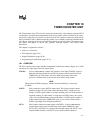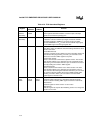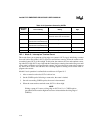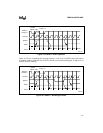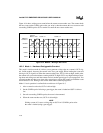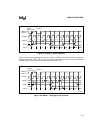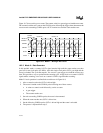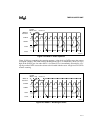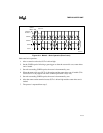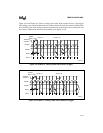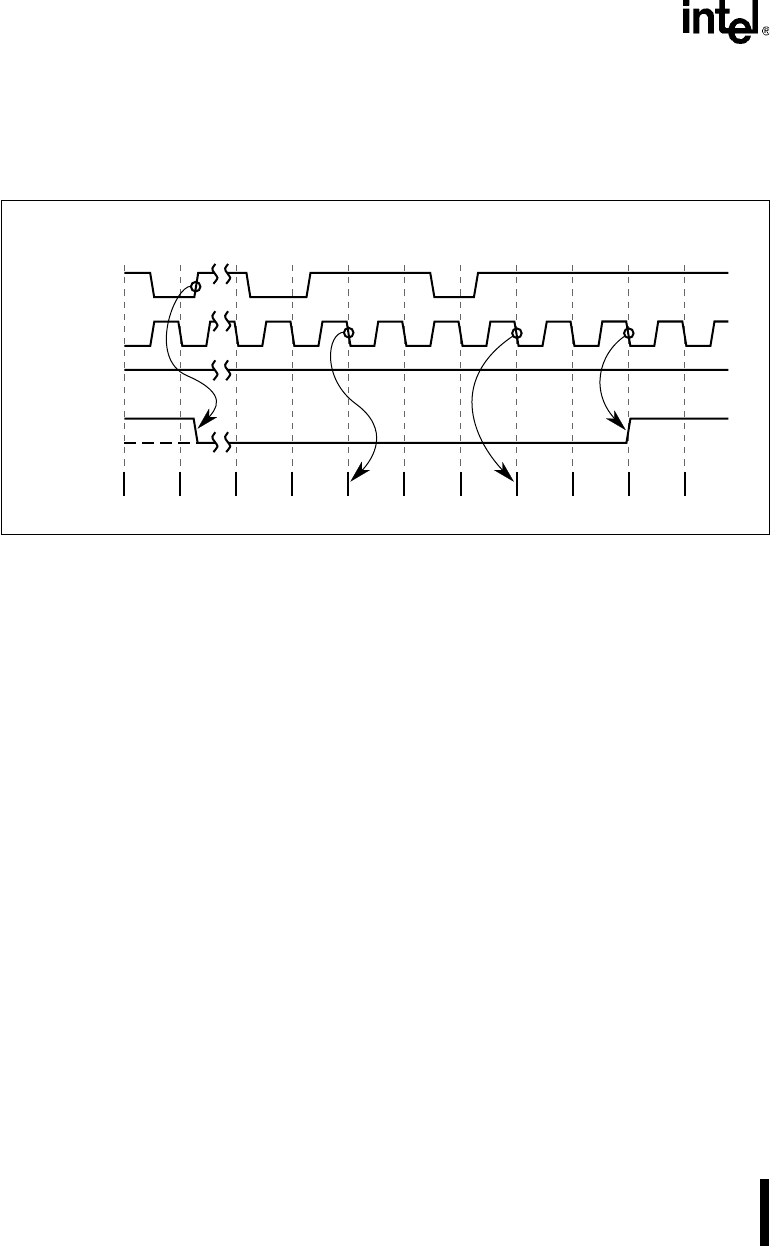
Intel386™ EX EMBEDDED PROCESSOR USER’S MANUAL
10-8
Figure 10-4 shows writing a new count before the current count reaches zero. The counter loads
the new count on the CLKINn pulse after you write it, then decrements this new count on each
succeeding CLKINn pulse. OUTn remains low until the new count reaches zero.
Figure 10-4. Mode 0 – Writing a New Count
10.2.2 Mode 1 – Hardware Retriggerable One-shot
This mode is similar to mode 0; it allows you to generate a rising edge on a counter’s OUTn sig-
nal. Unlike mode 0, however, the counter waits for a gate-trigger before loading the count and
driving its OUTn signal low. When the counter reaches zero, OUTn is driven high. At this point,
the counter rolls over and continues counting with OUTn high. OUTn stays high and keeps count-
ing down and rolling over until the counter receives another gate-trigger or you reprogram it. You
can retrigger the one-shot at any time with a gate-trigger, causing the counter to reload the count
and drive OUTn low. Writing a new control word to the counter reprograms it.
Mode 1’s basic operation is outlined below and shown in Figure 10-5.
1. After a control word write, OUTn is driven high.
2. On the CLKINn pulse following a gate-trigger, the count is loaded and OUTn is driven
low.
3. On each succeeding CLKINn pulse, the count is decremented.
4. When the count reaches zero, OUTn is driven high.
NOTE
Writing a count of N causes a rising edge on OUTn in N CLKINn pulses after
the count is loaded (using a gate-trigger).
Writes to
Counter
n
CLKIN
n
GATE
n
OUT
n
????0003 0002 0001 0002 0001 0000 FFFF
Control
Word = 10H
Count
Count = 2
Count = 3
A2395-02




